During its history, the Holy Crown was often outside the territory of the country. Retrieving it was usually important for reigning but not yet crowned rulers, because the crowning of Hungarian kings could only be done with the Holy Crown, it could not be replaced by any other crown, the legitimate king could only be the one who had the Holy Crown symbolising Hungarian statehood placed on his head.
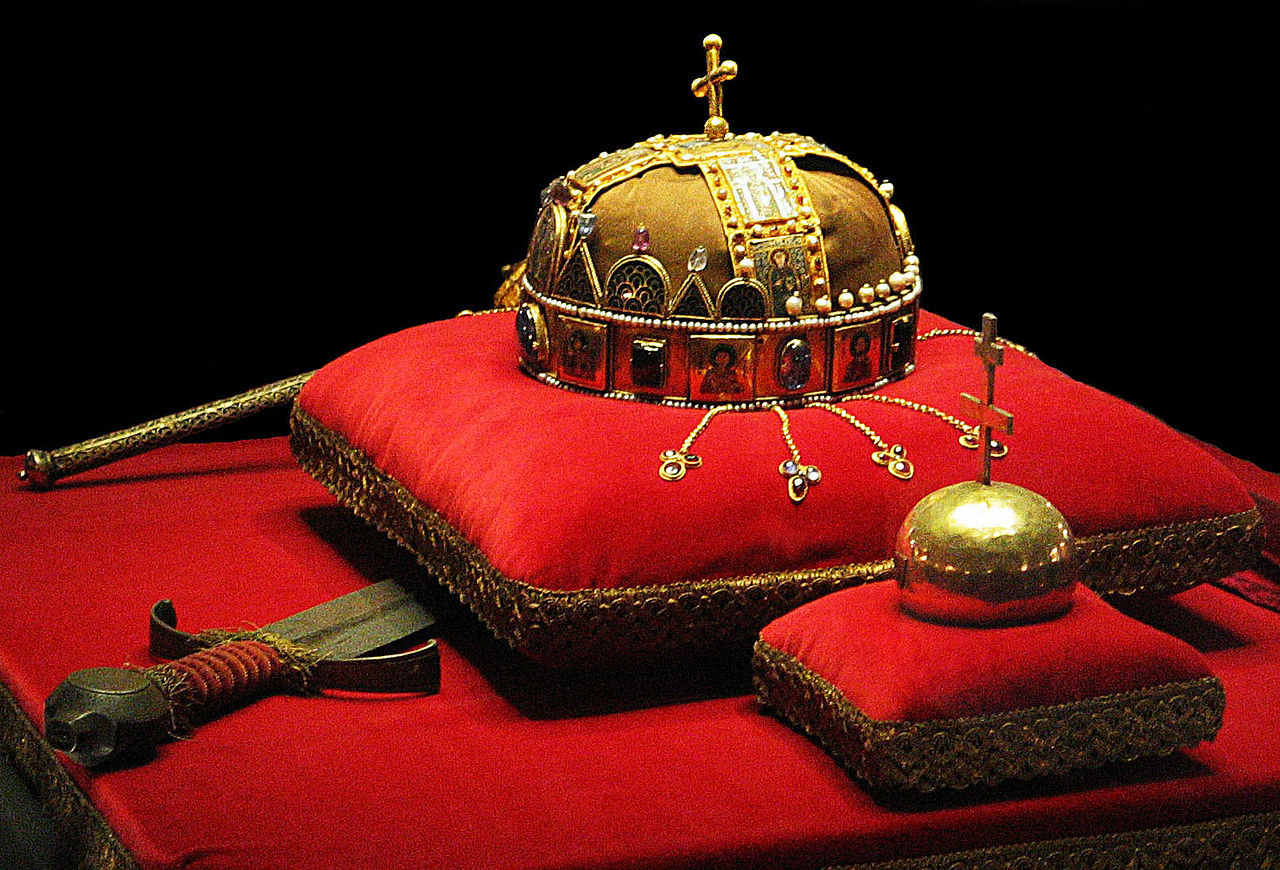
The Holy Crown, the Sword, the Sceptre and the Globus Cruciger (Photo: Wikipedia)
At the end of World War II, the most important Hungarian historical relic was sent abroad: it was first evacuated from the fighting to rural towns and then abroad along with the rest of the coronation jewels. According to the later recollections of the crown guards, the chest containing the Holy Crown was taken across the border into Austrian territory on 27 March 1945.
Near the town of Mattsee, the crown, the globus cruciger and the sceptre were taken out of the chest and buried. Thus, the chest handed over to the American military command in Germany contained only the sword. But one of the crown guards told them where the other relics were. This is how the Hungarian coronation jewels got to the United States Army.
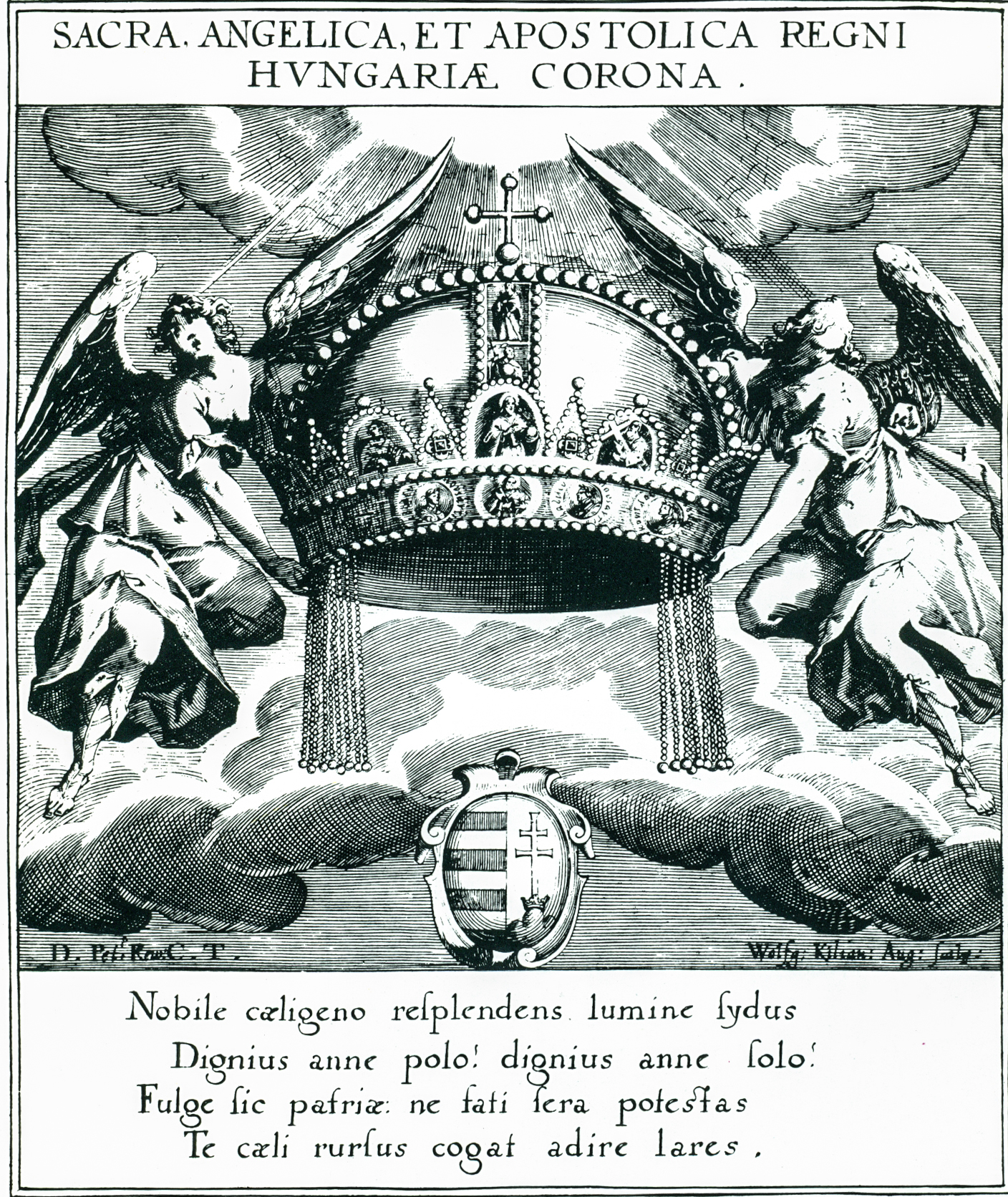
The Hungarian Holy Crown on an Augsburg engraving from 1613 (Source: Wikimedia Commons)
The relics were kept in Germany for a few years, and then in 1953 they were transported to the United States, where they were in the Fort Knox military fortress in the state of Kentucky until January 1978, the same place where a significant part of the USA's gold stock was stored.
The country's leadership wanted to get it back, but since Hungary had long been ruled by first secretaries or general secretaries and not kings, i.e. as a "socialist" state Hungary was part of the Soviet sphere of influence, this was not among the most important goals. And the Americans refrained from returning the coronation jewels for a long time.
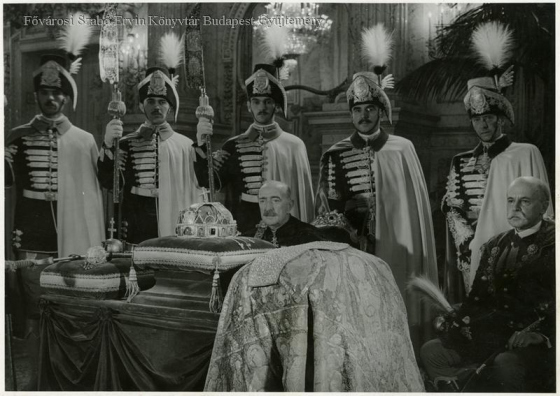
Public display of the Holy Crown and coronation jewels in the marble hall of the Buda Castle in 1938. In the background members of the Hungarian Royal Crown Guard are standing, and the sitting crown guards are Baron Zsigmond Perényi on the left, and Count Tibor Teleki on the right (Source: FSZEK Budapest Collection)
However, negotiations between the Hungarian and American governments began in the 1960s, and these led to results by the 1970s, especially after a change in world politics. Let us not forget that this period brought an easing of the Cold War, a kind of rapprochement began in Helsinki in 1975, because at that time the socialist states accepted human rights and universal freedoms, at least on paper, and Hungarian-American interstate relations also improved.
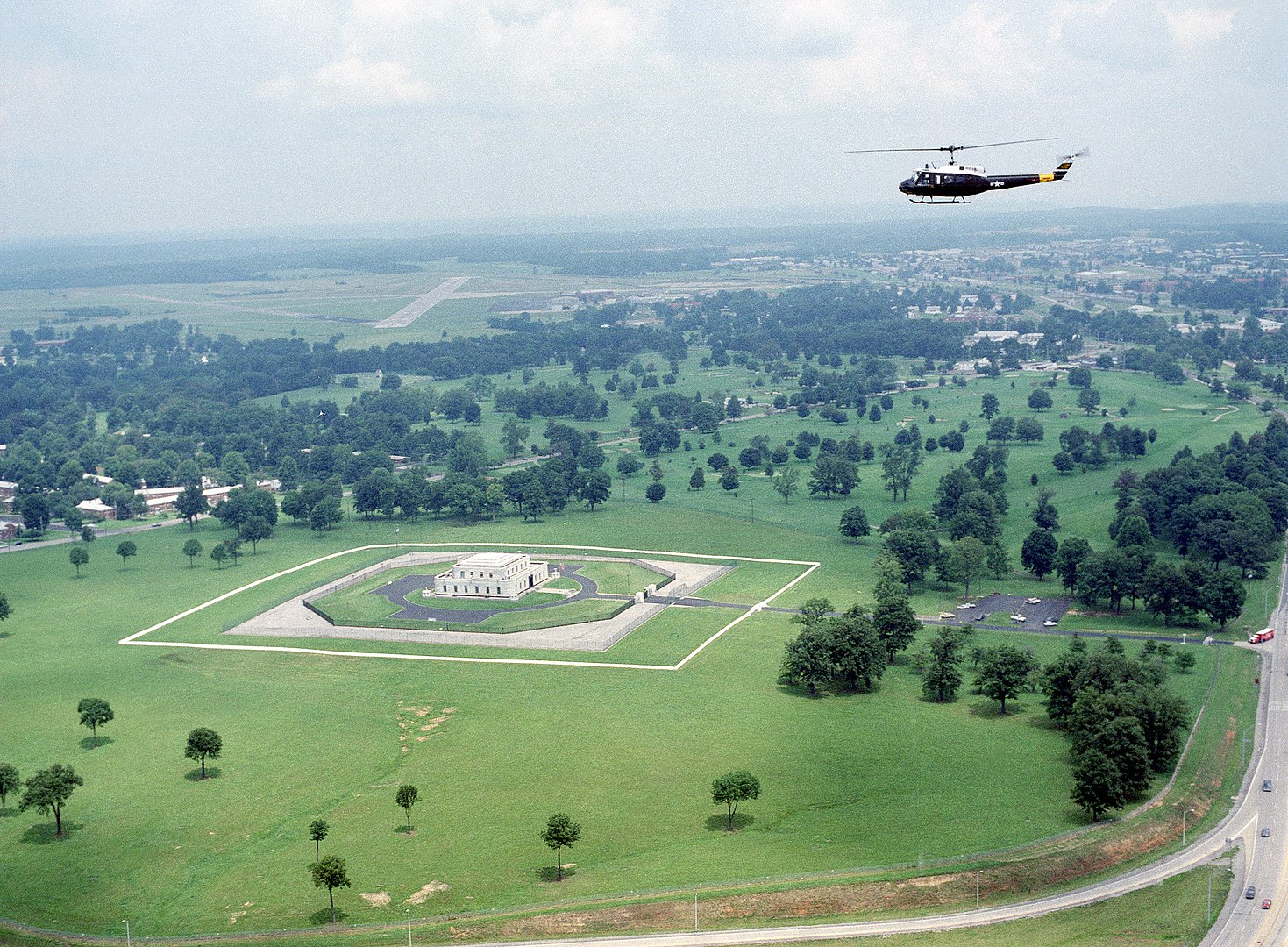
Fort Knox, where the Holy Crown was kept between 1953 and 1978 (Photo: Wikipedia)
This is also why, after long negotiations, President Carter decided in 1977 to return the coronation jewels to the Hungarian nation. The handover was scheduled for January 1978, after the US Supreme Court rejected all efforts to prevent it.
The Holy Crown, symbolising Hungarian statehood and the thousand-year-old Hungary, returned home 45 years ago, on 5 January 1978, and its ceremonial handover took place on 6 January 1978.
The contract on the return stated that the handover must take place in a ceremonial setting in Budapest, and it can be freely broadcast by the domestic and international press. They regulated the content of the speeches and who could be present at the event. Although the text does not say, the state party is not listed among the participating organisations. We quote the relevant part of the agreement from the 1 January 1978 issue of the Amerikai Magyar Világ newspaper:
„No. 3 The host committee will include the head of the Hungarian state or his delegate, members from the National Assembly, the Presidential Council and the government, as well as the leadership of the churches, including cardinal-primate, as well as Protestant and Jewish denominational leaders, representatives of civic organisations and prominent personalities of the cultural and academic life."
Several recollections confirm that the parties had previously verbally agreed that János Kádár would stay away from the celebrations, and the same was written in the study volume titled A Szent Korona hazatér. A Magyar korona tizenegy külföldi újta (1205–1978) [The Holy Crown Returns. Eleven Foreign Journeys of the Hungarian Crown (1205–1978)] by Tibor Glant.
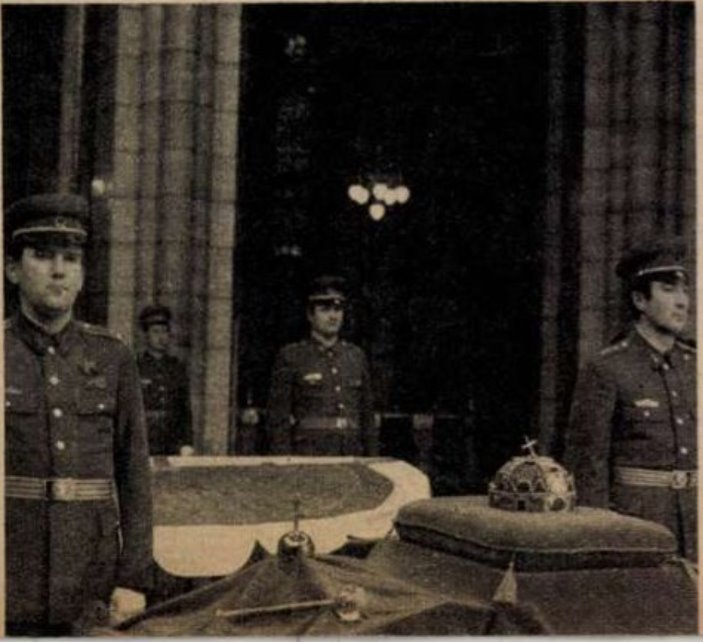
The Holy Crown in the Parliament on 6 January 1978 (Source: Képes Újság, 14 January 1978)
The Holy Crown and the other coronation jewels were received at home in a ceremonial setting. The special plane carrying the relics arrived at Ferihegy, decorated with Hungarian and American flags, on the evening of 5 January 1978, with a large American delegation, which included Albert Szent-Györgyi, Nobel Prize-winning scientist, who had already lived in the USA for decades at that time. The Hungarian delegation was also large, according to the report of the Esti Hírlap on 6 January 1978:
"On the occasion of the return of the crown and the coronation jewels, János Péter, Deputy Speaker of the National Assembly, Frigyes Puja, Minister of Foreign Affairs, János Bugár, Vice-President of the National Council of the Patriotic People's Front, Zoltán Szépvölgyi, President of the Capital City Socialist Council, Ferenc Márta, the Secretary General of the Hungarian Academy of Sciences, Archbishop László Lékai and Reformed Bishop Tibor Bartha, members of the National Council of the Patriotic People's Front, Imre Héber, President of the National Representation of the Hungarian Israelites, as well as several members of the Parliament, the National Council of the Patriotic People's Front, and other representatives of social life, a group of hundreds of people from the population of Budapest appeared at Ferihegy Airport to receive the American delegation. Ferenc Esztergályos, the ambassador of the Hungarian People's Republic in Washington, was present at the reception."
According to some opinions, the event was not announced to the domestic public in advance so that there would not be a large crowd at the airport, apart from the reception committees and the press, only 2-300 invited guests were present. The television did not broadcast it live, but 2 hours after the events.
The crown and the chest containing the jewels were taken off the plane to the sounds of the Rákóczi March, a ceremonial unit placed it on the transport car - a Robur truck with flags on it - then the military band played the Hungarian and American national anthems, and then the Holy Crown was delivered to the Parliament. The crown and coronation jewels were examined here, and an inventory was also prepared, which can be found in the Hungarian National Archives, the first point of this inventory reads as follows:
„No 1 A crown made of gold, decorated with 19 enamel images, precious stones, real pearls, closed, with top and pendant decorations. Diameter: 21.3 and 20.3 cm”
The inventory then lists the other objects, the sceptre, the globus cruciger, the sword and the coronation mantle, the chests, and the inventory notes that 220 pages of documents relating to the history and preservation of the crown were returned with the crown. The inventory was compiled by Victor Covey, chief conservator of the US National Gallery, and it was signed by dr. Ferenc Fülöp, the director general of the Hungarian National Museum.
.jpg)
The coronation jewels already in the Hungarian National Museum (Photo: Fortepan/No.: 194437)
The next day, on 6 January, Foreign Minister Cyrus Vance arrived, and in the afternoon of 6 January 1978, in the dome hall of the Parliament, he ceremoniously handed over the Holy Crown and the coronation jewels to the Hungarian people (i.e. not to the government). The US Secretary of State also gave a speech in which he quoted President Carter, who called it an honour for the United States to guard the crown.
On the Hungarian side, Antal Apró, the President of the National Assembly, answered, who accepted the jewels on behalf of the Hungarian people. After the parliamentary ceremony, the Holy Crown and the coronation jewels were transported to the Hungarian National Museum, as it was part of the agreement that they would be exhibited. The American delegation was hosted by Antal Apró at a reception.
The handover ceremony was not only broadcast on domestic television and reported on by domestic newspapers, but it also became prominent news internationally, not only in eastern but also in western news agencies.
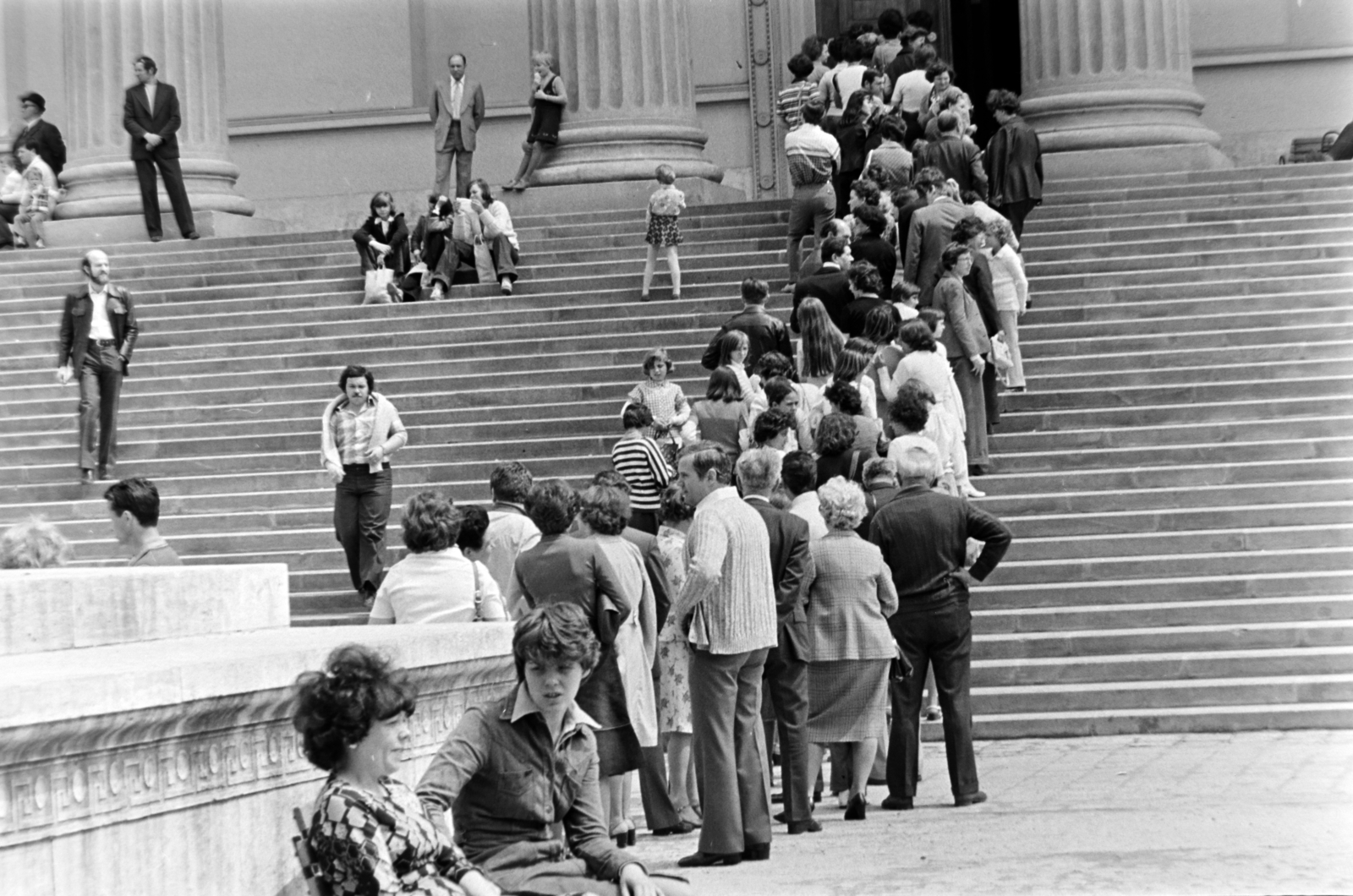
Long lines in front of the Hungarian National Museum, the crowds wanted to see the Holy Crown (Photo: Fortepan/No.: 194438)
Since then, the Holy Crown has been kept at home, and as the agreement on its return states, it can be seen freely, although today it is not in the National Museum, but in the building of the Hungarian National Assembly, i.e. the Parliament.
Cover photo: The Hungarian Holy Crown and the coronation jewels in 1938 (Source: FSZEK Collection)

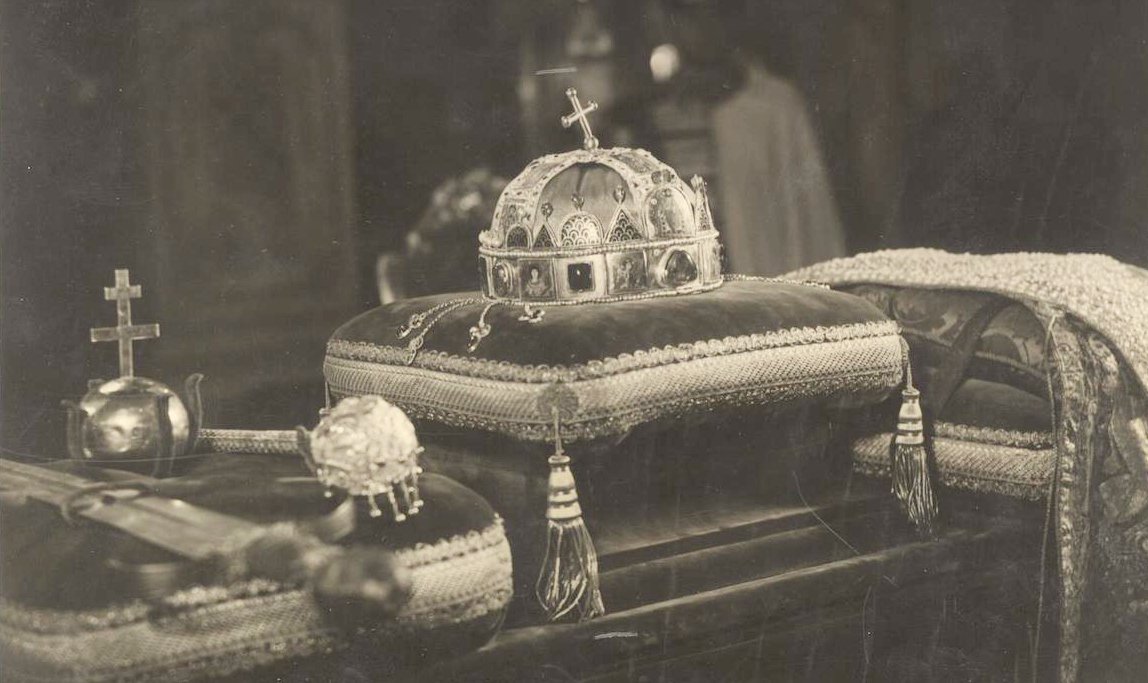


































Hozzászólások
Log in or register to comment!
Login Registration